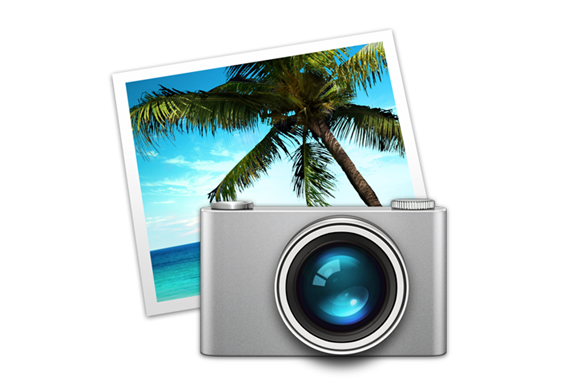All your photos on all your devices. ICloud Photos gives you access to your entire Mac photo and video library from all your devices. If you shoot a snapshot, slo-mo, or selfie on your iPhone, it’s automatically added to iCloud Photos — so it appears on your Mac, iOS and iPadOS devices, Apple TV, iCloud.com, and your PC. Get the best deals on Apple Mac OS X 10.9, Mavericks Apple Mac Computer Software and find everything you'll need to improve your home office setup at eBay.com. Fast & Free shipping on many items!
| Developer(s) | Apple Inc. |
|---|---|
| Initial release | January 7, 2002; 18 years ago[1] |
| Final release | 9.6.1 / March 19, 2015; 5 years ago |
| Operating system | macOS |
| License | Proprietary |
| Website | apple.com/mac/iphoto/[dead link] |
| Developer(s) | Apple Inc. |
|---|---|
| Final release | |
| Operating system | iOS |
| License | Proprietary |
| Website | apple.com/ios/iphoto/[dead link] |
iPhoto was a digital photograph manipulation software application developed by Apple Inc. It was included with every Macintoshpersonal computer from 2002 to 2015, when it was replaced with Apple's Photos application. Originally sold as part of the iLife suite of digital media management applications, iPhoto was able to import, organize, edit, print and share digital photos.
History[edit]
iPhoto was announced at Macworld 2002, during which Steve Jobs (then-CEO of Apple) also announced that macOS would be installed standard on new Macs from then on, and revealed new iMac and iBook models.[2]
On March 7, 2012, Apple CEO Tim Cook announced an iOS-native version of iPhoto alongside the third-generation iPad.[3]
On June 27, 2014, Apple announced that they would cease development of iPhoto and work on a transition to their new Photos app.[4] On February 5, 2015 Apple included a preview of Photos with a 10.10.3 beta.[5]

On April 8, 2015, Apple released OS X Yosemite 10.10.3, which includes the new Photos app. iPhoto and Aperture were discontinued and removed from the Mac App Store.
With the release of macOS Catalina 10.15 on October 7, 2019, iPhoto became unusable.
Features[edit]
macOS version[edit]
iPhoto was designed to allow the importing of pictures from digital cameras, local storage devices such as USB flash drive, CDs, DVDs and hardrives to a user's iPhoto Library. Almost all digital cameras were recognized without additional software. iPhoto supported most common image file formats, including several Raw image formats.[6] iPhoto also supported videos from cameras, but editing was limited to trimming clips.[citation needed]
After photos were imported, they could be titled, labeled, sorted and organized into groups (known as 'events'). Individual photos could be edited with basic image manipulation tools, such as a red-eye filter, contrast and brightness adjustments, cropping and resizing tools, and other basic functions. iPhoto did not, however, provide the comprehensive editing functionality of programs such as Apple's own Aperture, or Adobe's Photoshop (not to be confused with Photoshop Elements or Album), or GIMP.
iPhoto offered numerous options for sharing photos. Photo albums could be made into dynamic slideshows and optionally set to music imported from iTunes. Photos could be shared via iMessage, Mail, Facebook, Flickr and Twitter. Creating and sharing iCloud Photostreams are possible as well,[7] both public and invitation based ones. iPhoto was also able to sync photo albums to any iPod with a color display. These iPods might also have an audio/video output to allow photos to be played back, along with music, on any modern television. Additionally, photos could be printed to a local printer, or, in certain markets, be sent over the internet to Kodak for professional printing. iPhoto users could order a range of products, including standard prints, posters, cards, calendars, and 100-page hardcover or softcover volumes—again, such services were available only to users in certain markets.[8]
How To Download Iphoto For Mac
iOS version[edit]
Apple Iphoto For Mac

At an Apple media event on March 7, 2012, Apple CEO Tim Cook announced a new version of iPhoto for use on the iOS mobile operating system.[9] iPhoto for iOS was made available that day on the App Store for US$4.99 alongside the already-released iMovie and GarageBand for iOS. It was officially supported on the iPhone 4 and later, iPod Touch (4th and 5th generations), iPad 2 and later and iPad Mini (1st and 2nd generations), but hackers discovered that it could be installed manually on older devices using Apple's iPhone Configuration Utility.[10][11]
iPhoto for iOS offered a feature set fairly comparable to that of its Mac counterpart. It could organize photos that were synced to the device or taken with its camera. Editing features included color correction tools and photo effects, as well as cropping and straightening tools. iPhoto for iOS lacked tools for creating books, calendars, cards and ordering prints, though it could create 'Photo Journals'—digital photo collages that could be uploaded to Apple's iCloud service and shared.[12]
iPhoto for iOS was highly praised for its professional tools, good performance and compatibility.[13]
iPhoto for iOS was discontinued in 2014 and removed from the App Store in favor of Photos.
See also[edit]
References[edit]
Iphoto For Mac Mavericks Shortcut

- ^'Apple Introduces iPhoto'. Retrieved May 11, 2012.
- ^'Macworld keynote: New iMac, iBooks, iPhoto'. Geek. January 7, 2002. Retrieved April 10, 2015.
- ^'Apple launches third-generation iPad with hi-res screen, and iPhoto for iOS'. Digital Photography Review. March 7, 2012. Retrieved February 8, 2014.
- ^'Apple To Cease Development Of Aperture And Transition Users To Photos For OS X'. June 27, 2014. Retrieved June 27, 2014.
- ^'Photos preview'. Archived from the original on April 7, 2015. Retrieved September 9, 2017.
- ^'Apple - OS X Mavericks: Supported digital camera RAW formats'. Apple Inc. Retrieved March 14, 2014.
- ^'Apple - iPhoto 9.5: iCloud Photo Sharing overview'. Apple Inc. Retrieved March 14, 2014.
- ^'Apple - Print Products for Mac'. Apple Inc. Retrieved March 14, 2014.
- ^'iPhoto for iOS now available on App Store for $4.99'. Idownloadblog.com. March 7, 2012. Retrieved March 16, 2012.
- ^iPhone Configuration Utility.
- ^Dilger, Daniel Eran. 'New iPhoto and iMovie apps can manually be copied to original iPad'. Retrieved April 22, 2012.
- ^Dove, Jackie. 'iPhoto Version 1.0 Review'. Retrieved April 22, 2012.
- ^Boehret, Katherine (March 13, 2012). 'Letting Your Fingers Do the Photo Editing'. All Things Digital. Retrieved March 16, 2012.
External links[edit]
- Video of iPhoto introduction at Macworld San Francisco on YouTube
- Original iPhoto TV ad on YouTube